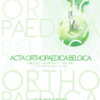Comparison of the WALANT and the PFNB techniques in the surgical treatment of unimalleolar fractures: a prospective study
WALANT; popliteal fossa nerve block; malleolar fracture; visual analog scale; ORIF
Published online: Aug 23 2022
Abstract
The popliteal fossa nerve block (PFNB) technique is one of the most popular anesthesia method in the foot and ankle surgery. The wide awake local anesthesia no tourniquet (WALANT) technique is an local anesthetic method and it has been gaining popularity in orthopedic surgery in recent years. Our aim is to compare the efficacy of the WALANT and the PFNB techniques in pain management. This prospective study included 40 patients with lateral malleolar and medial malleolar fractures. The first group was anesthetized using the WALANT technique; in the second group, PFNB was performed. All patients were evaluated for intrasurgical bleeding amounts, mean arterial pressure, surgery time and VAS scores for presurgical pain, pain during the local anesthetic injection sequence, mean intrasurgical pain, mean postsurgical pain. A total of 40 patients in both groups were successfully operated on with the WALANT and the PFNB techniques. When the two groups were compared, statistically significant differences were observed for mean intrasurgical VAS (p = 0.033), mean postsurgical VAS (p = 0.038) and intrasurgical bleeding (p = 0.006). No significant difference was found in pain scores during anesthetic injection (p = 0.529), mean arterial pressure (p = 0.583) and surgery time (p = 0.277). The PFNB technique is more successful in pain management in the treatment of the unimalleolar fractures. Intrasurgical bleeding amounts were less detected in the WALANT tech- nique. The both techniques are a reliable and suitable anesthetic method in the surgical treatment of uni- malleolar fractures.
